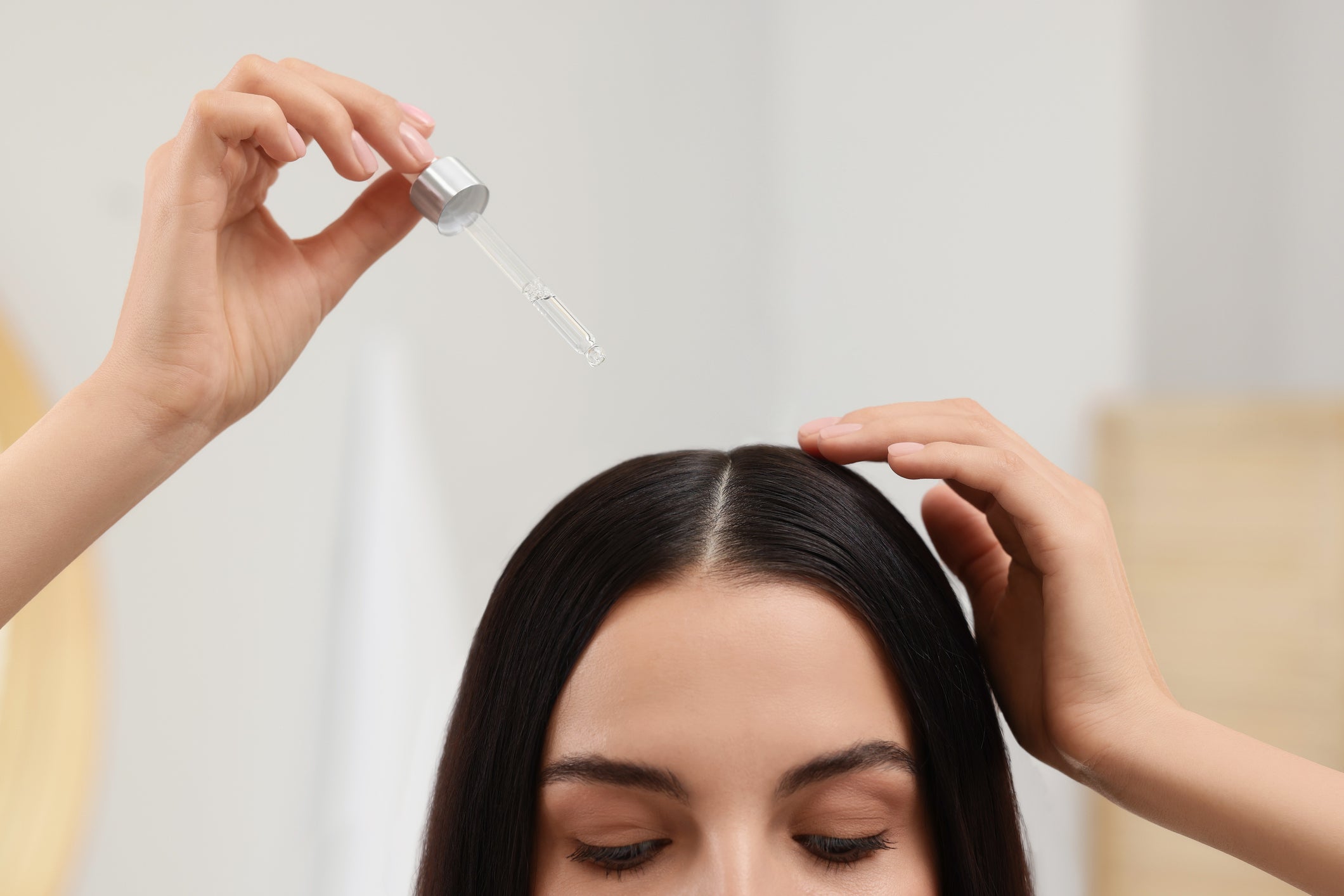How to treat a thinning hairline, according to a trichologist
With so many supposed remedies for hair loss circulating online, we cut through the noise

If you’ve noticed your edges thinning or your hairline retreating, you’re not alone. Hair loss in women is far more common than people think. According to Dr Mohammed Ditta of Harley Street Hair Transplant Clinics, an estimated 8 million women in the UK experience some form of hair loss. For Black women with afro-textured hair, hair loss can be especially prevalent thanks to traction alopecia. While repeated tension from certain hairstyles and chemical treatments can play a role, factors such as hormonal changes and increased stress levels can also be contributing factors.
For many, hair loss can feel deeply personal. Our hair plays a huge role in identity and self-expression, so when it starts to thin, it really can knock your confidence.
On top of that, trying to find a real solution can often be frustrating. The internet is filled with anecdotal and badly sourced advice; some people swear by minoxidil, others suggest derma rolling, PRP treatments, or a full-blown transplant. With so many options out there, it’s difficult to know what actually works.
To cut through the noise, we spoke to trichologist Hannah Gaboardi, who shares the five science-backed ways to restore your hairline and bring back your edges. She also gives her take on whether stimulating hair oil remedies work.
Meet the expert
Leading trichologist Hannah Gaboardi has 15 years of experience and has become one of the most trusted names in hair and scalp care. Her Hair Growth Clinic is situated at Nobu Portman Square, London.
Do oils really help hair growth?
The internet is full of claims that essential oils, such as rosemary and peppermint, can work miracles for hair growth. But while these oils may help stimulate the scalp, they don’t necessarily translate to significant hair growth, and, in some cases, they could do more harm than good.

“Rosemary oil, for example, can create a barrier on the hair follicle, depending on your hair’s porosity, potentially blocking growth rather than encouraging it,” explains Gaboardi. “There are no long-term studies proving its effectiveness, and excessive oil buildup on the scalp can actually lead to conditions such as seborrheic dermatitis or psoriasis.”
While using oils as part of a scalp massage routine may improve circulation, they aren’t a magic fix, and relying on them without addressing other factors such as diet, stress, and overall scalp health might not yield the results people hope for.
Read more: Best leave-in conditioners for every hair type
When it comes to traction alopecia, hair transplants are often seen as a last resort, but are they really the best solution?
“In cases where traction alopecia has caused scarring, a transplant may be the only option,” says Gaboardi. “However, even after the procedure, it’s crucial to follow a proper haircare routine, including topical treatments, to prevent further thinning or hair loss.”
For those experiencing early signs of hair loss, there are often other steps to take before considering surgery. From reducing tension on the hair to using targeted treatments, prevention and maintenance are key to long-term hair health.
5 hair loss solutions
1. Stop the damage before it’s too late
Traction alopecia, the leading cause of hairline thinning in Black women, happens when hair is repeatedly pulled too tightly, putting strain on the follicles. “Haircare is the most important when dealing with traction alopecia,” says Gaboardi. “This condition commonly arises from tight hairstyles, such as braids, ponytails, weaves, and extensions that place excessive stress on the scalp.”

If your edges are thinning, it’s time to loosen up. “It is important to release the edges when having hairstyles that contain extreme pulling,” she explains. Taking breaks from tension-heavy styles enables the follicles to recover. It’s also best to avoid chemical treatments such as relaxers or keratin treatments: “These weaken fragile follicles along the hairline, and continuous damage can lead to dormant follicles, which can eventually cause permanent scarring,” says Gaboardi. If your goal is regrowth, it’s essential to catch the damage early.
2. Consider minoxidil and prescription medications
If there’s one hair loss treatment that’s been clinically proven to work, it’s minoxidil. Available over the counter, it works by increasing blood flow to the hair follicles, and “stimulates hair follicles and promotes hair growth”, explains Gaboardi.
For mild cases of traction alopecia, minoxidil may only need to be used for 12 months to fully restore the hairline. However, for severe cases, a trichologist may recommend prescription medication. “Patients with advanced traction alopecia may need androgenetic drugs to help promote growth.”
3. Check if deficiencies are the problem
If your hair is thinning, your body might be lacking key nutrients. “Many women suffering from a thinning hairline or traction alopecia have vitamin and iron deficiencies,” says Gaboardi. A blood test could help determine if there are any underlying issues.
Read more: Best sulphate-free shampoos for healthy locks
While a GP might focus on overall health, trichologists look at different markers, such as vitamin and nutrient levels. “Levels need to be on the higher range to help your hair grow,” explains Gaboardi. If you’ve recently had a baby, this is especially important. “Many patients who have suffered from a thinning hairline after pregnancy have deficiencies that can trigger hair loss.” The same goes for women with PCOS or endometriosis – conditions that can cause hormonal imbalances that directly affect hair health. If you’ve tried everything and nothing seems to work, a blood test could reveal the missing piece of the puzzle.
4. PRP treatments
If topical treatments haven’t worked, PRP therapy could be the next step. “PRP involves drawing a small amount of the patient’s blood, processing it to separate the platelets, and then injecting the concentrated platelets into areas of the scalp affected by hair loss,” explains Gaboardi. These growth-factor-rich platelets stimulate hair follicles, improve scalp health, and promote regrowth.
“PRP helps restore the hairline and is particularly recommended for women who are recently postpartum,” Gaboardi adds. The catch? Results aren’t instant. “Many patients need four to six sessions to see significant regrowth.” While it’s not the cheapest option, PRP has become one of the most effective treatments for stubborn hair loss.
5. Adjust your diet
While topical treatments are important, your diet plays a huge role in hair growth. “Food is the easiest source to absorb vital nutrients and vitamins that our body may be deprived of,” says Gaboardi. The right balance of biotin, vitamin E, omega-3 fatty acids, iron, and protein can strengthen the hair shaft, reduce breakage, and promote growth.
Read more: Best shampoo bars that are well worth making the switch

What should you be eating? “Foods like salmon, avocados, nuts, leafy greens, and eggs are all excellent sources of hair-loving nutrients,” Gaboardi explains. Making small changes to your diet can make a big difference to your hair health, so if you’re looking for a natural way to improve your hairline, start by thinking about what goes on your plate.
Looking for more recommendations? Read our review of the best heat protectant sprays




